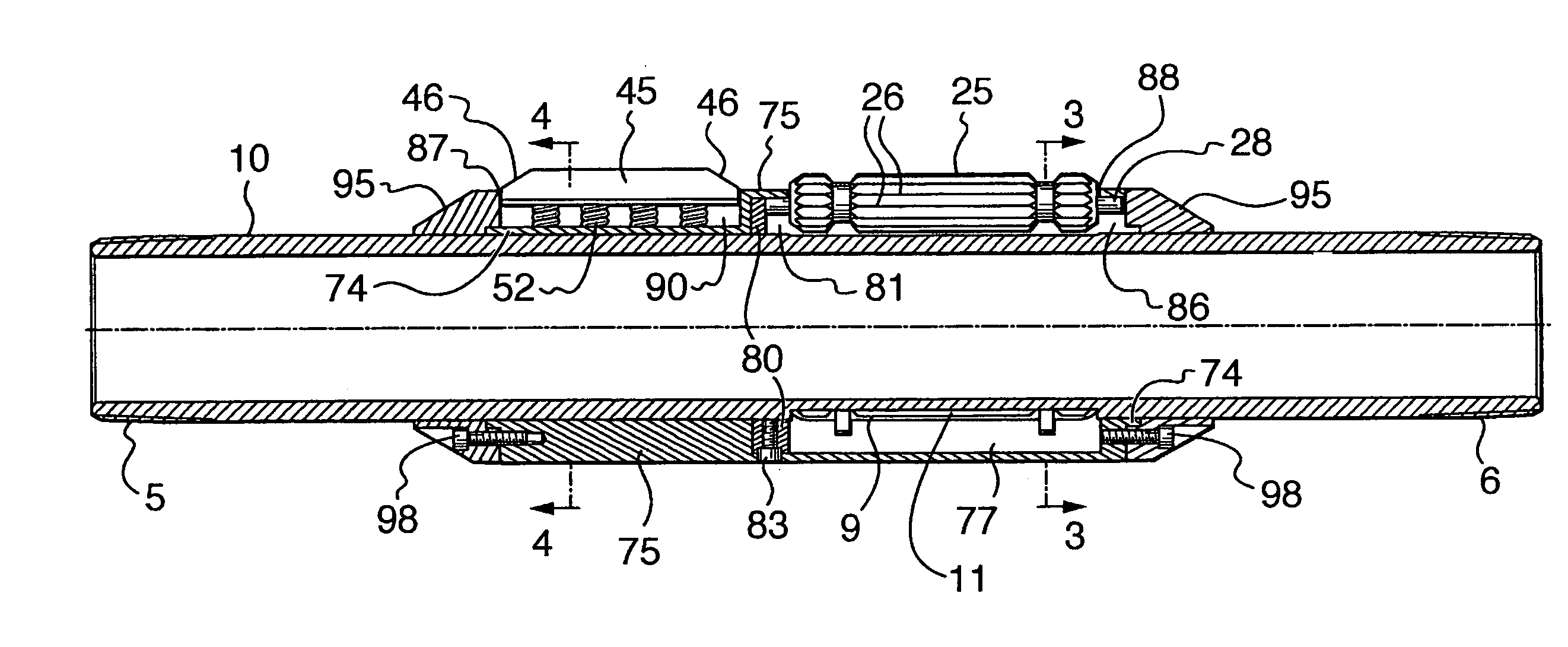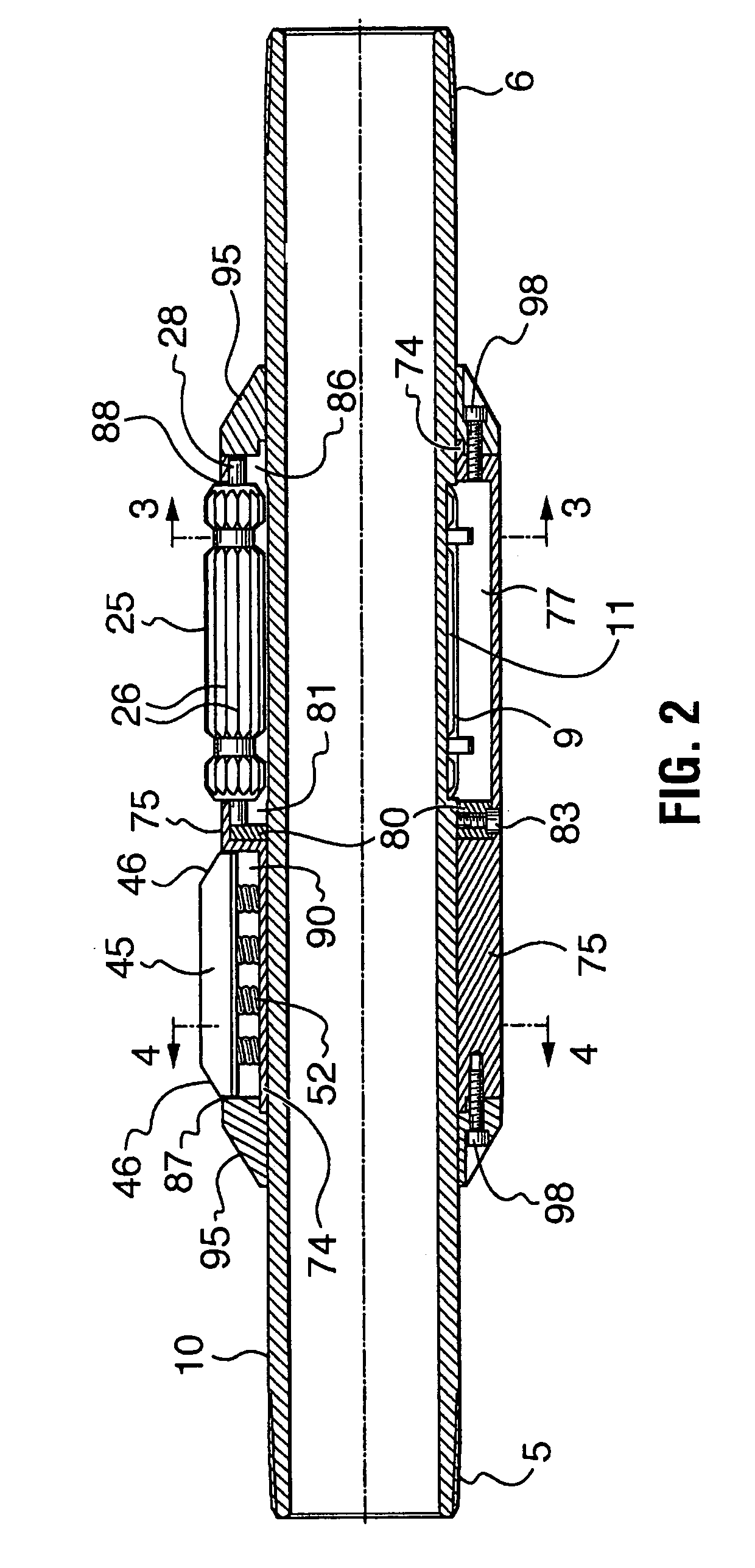Torque anchor
a technology of torque anchors and torque rods, which is applied in the direction of tubing catchers, fluid removal, borehole/well accessories, etc., can solve the problems of affecting the operation of the pump, and affecting the operation of the torque anchor
- Summary
- Abstract
- Description
- Claims
- Application Information
AI Technical Summary
Benefits of technology
Problems solved by technology
Method used
Image
Examples
Embodiment Construction
[0021]Referring initially to FIG. 1, the principal components of the present torque anchor 1 include a longitudinally extending tubular mandrel 10, one or more cylindrical rotatable anchoring slip assemblies 20 that can be biassed against the well casing by the mandrel to prevent rotation of the anchor, frictional drag blocks 45 that are continuously biassed against the casing and a rotatable slip housing 75 that retains the slip assemblies and drag blocks in their operational positions.
[0022]With reference to FIGS. 2 and 7, mandrel 10 is a hollow tubular member threaded at its opposite ends 5 and 6 for respective connection at one end to the stator of the progressing cavity pump (not shown), and at the other end to any tubing below the anchor (again not shown). At a point intermediate along its length the mandrel includes a section 9 serrated with longitudinally extending teeth 11 the configuration of which will be seen most clearly in FIG. 3. The cross-sectional shape of toothed s...
PUM
 Login to View More
Login to View More Abstract
Description
Claims
Application Information
 Login to View More
Login to View More - R&D Engineer
- R&D Manager
- IP Professional
- Industry Leading Data Capabilities
- Powerful AI technology
- Patent DNA Extraction
Browse by: Latest US Patents, China's latest patents, Technical Efficacy Thesaurus, Application Domain, Technology Topic, Popular Technical Reports.
© 2024 PatSnap. All rights reserved.Legal|Privacy policy|Modern Slavery Act Transparency Statement|Sitemap|About US| Contact US: help@patsnap.com










